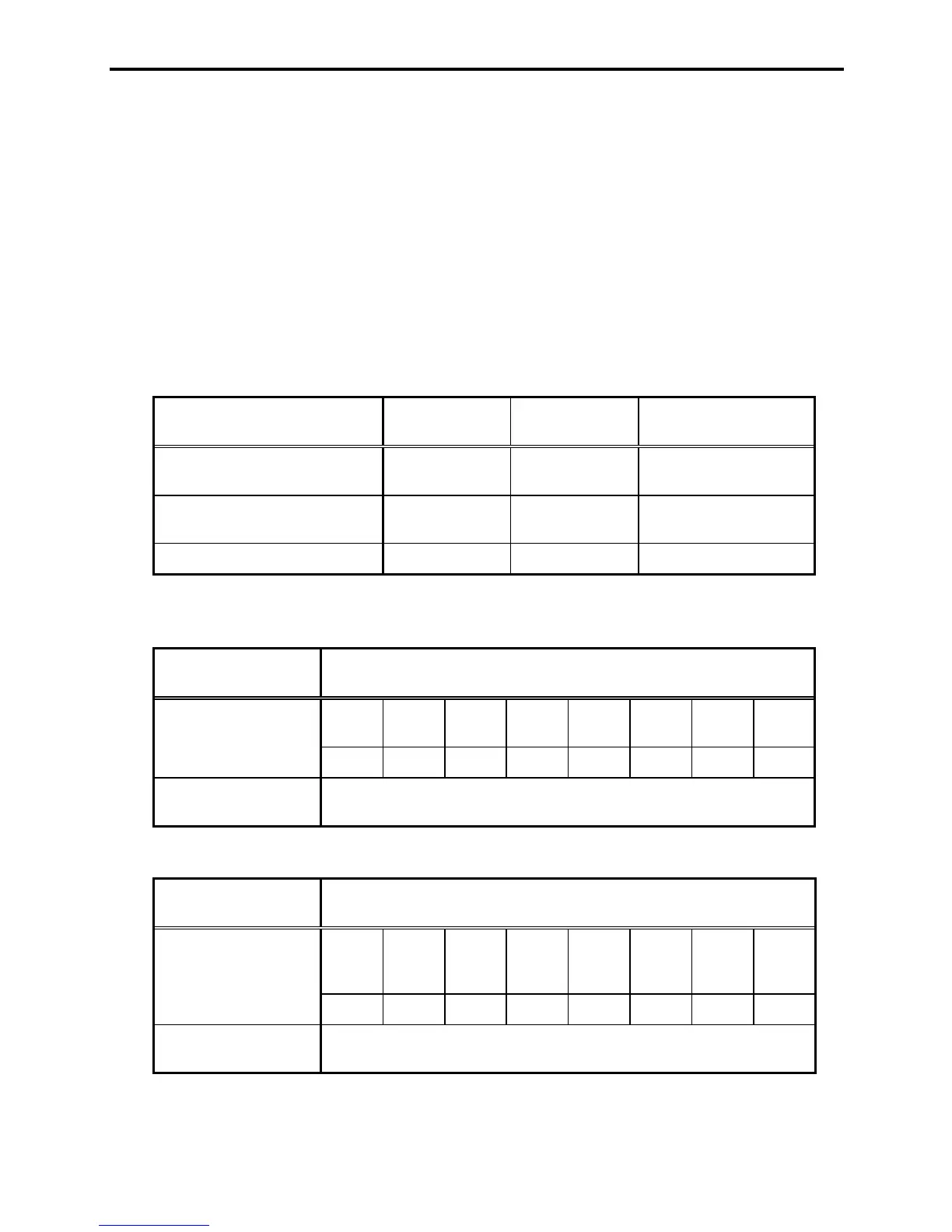A-16
Note: If the contract demand is between two specified values listed in Table B.7, calculate the value by
interpolation.
Note: The correction coefficient E is to be determined as a matter of consultation between the customer
and electric power supplier for the customers receiving the electric power over 2000 kW or from the
special high voltage lines.
(4) Degree of harmonics to be calculated
The higher the degree of harmonics, the lower the current flows. This is the property of harmonics
generated by inverters so that the inverters are covered by "The case not causing a special hazard" of the
term (3) in the above Appendix for the 9th or higher degrees of the harmonics.
Therefore, "It is sufficient that the 5th and 7th harmonic currents should be calculated."
[ 3 ] Examples of calculation
(1) Equivalent capacity
Example of loads
Input capacity and
No. of inverters
Conversion factor Equivalent capacity
[Example 1] 400V, 5 HP, 10 units
w/- AC reactor and DC reactor
4.61 kVA10 units K32 = 1.4
4.61 u 10 u 1.4
= 64.54 kVA
[Example 2] 400V, 2 HP, 15 units
w/- AC reactor
2.93 kVA15 units K34 = 1.8
2.93 u 15 u 1.8
= 79.11 kVA
Refer to Table B.2. Refer to Table B.3.
(2) Harmonic current every degrees
[Example 1] 400V, 5 HP 10 units, w/- AC reactor, and maximum availability: 0.55
Fundamental current
onto 6.6 kV lines (mA)
Harmonic current onto 6.6 kV lines (mA)
5th
(38%)
7th
(14.5%)
11th
(7.4%)
13th
(3.4%)
17th
(3.2%)
19th
(1.9%)
23rd
(1.7%)
25th
(1.3%)
39410= 3940
39400.55= 2167
823.5 314.2 㩷㩷㩷㩷㩷㩷
Refer to Tables B.4 and
B.6.
Refer to Table B.5.
[Example 2] 400V㧘5 HP㧘15 units, w/- AC reactor and DC reactor㧘and maximum availability: 0.55
Fundamental current
onto 6.6 kV lines (mA)
Harmonic current onto 6.6 kV lines (mA)
5th
(28%)
7th
(9.1%)
11th
(7.2%)
13th
(4.1%)
17th
(3.2%)
19th
(2.4%)
23rd
(1.6%)
25th
(1.4%
)
39415= 5910
59100.55= 3250.5
910.1 295.8
Refer to Tables B.4 and
B.6.
Refer to Table B.5.

